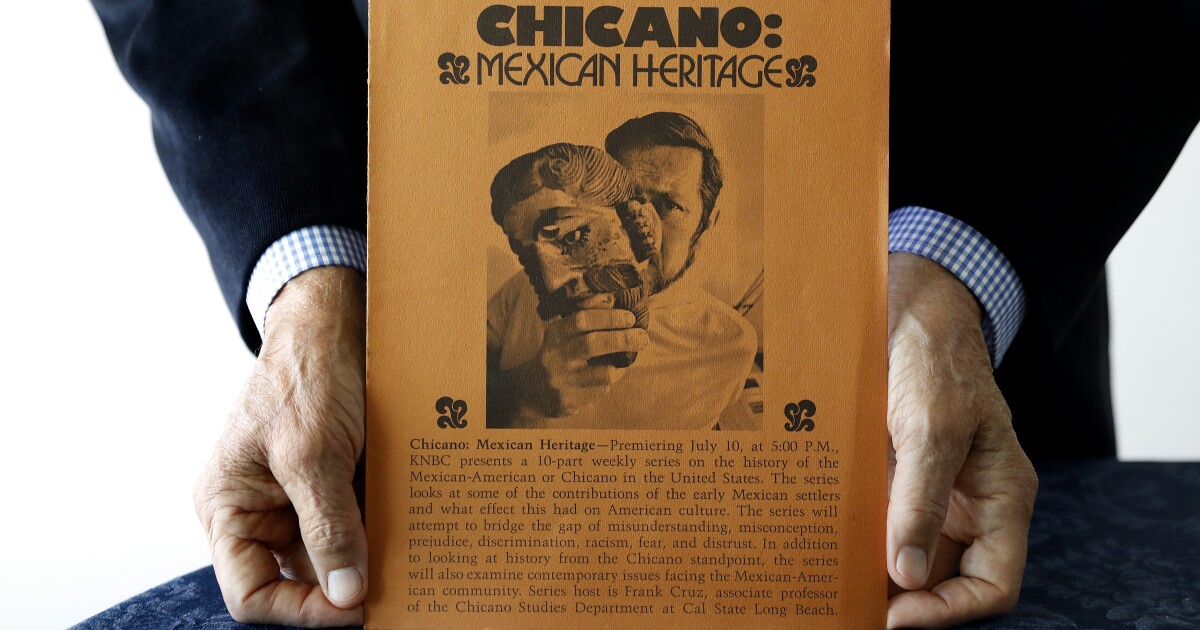Table of Contents
Every so normally, Frank Cruz would walk into his roomy garage in Laguna Niguel and ponder the boxes loaded with matters outdated and unused: tax returns, clothing and paperwork from his days as a Chicano scientific studies professor, Television set information reporter and anchor, co-founder of the Spanish-language community Telemundo and of a pioneering Latino-owned insurance policy organization. Not to mention notes from the several boards he’s served on, including the Corporation for Public Broadcasting.
But there was 1 particular big blue box — between a further that contains his now-grownup children’s baby enamel and 1 with a daughter’s wedding dress — that often gnawed at him. Its label go through: “Chicano Sequence.”
Inside were nine 16-millimeter movie reels of “Chicano I & II: The Mexican American Heritage Collection,” the tv show that initial aired on KNBC-Television in Los Angeles in July 1971. The sequence, hosted by Cruz when he was in his early 30s, also performed on sister stations in Chicago, New York, Cleveland and Washington, D.C.
For 50 decades, the reels remained in his garage, largely untouched.
On a modern August day, Cruz, now 82, considered to himself as he experienced dozens of situations ahead of: “Pendejo, you much better do one thing about people films. It could possibly be as well late.”

Frank Cruz at home in Orange County.
(Christina Property / Los Angeles Periods)
And he did. His contacts led him to a movie archivist at USC who digitized the movie and created a website for them. For the 1st time considering the fact that they aired and reran in the early 1970s, 9 of 20 episodes from the Chicano series are now publicly offered on the website for USC’s Hugh M. Hefner Transferring Graphic Archive. (No film exists from the “Chicano II” portion of the sequence, and Episode 6, titled “The War Decades,” was lacking from Cruz’s 1st-quantity holdings.)
“I was well prepared to listen to that [Dino Everett, the archivist] wasn’t in a position to do it since the film was also brittle, that they had damaged and that they have been no fantastic due to the fact the images fade,” states Cruz. But a few weeks later on, “after 10 candles and a prayer to Santo Niño de Atocha, he referred to as me and explained, ‘Frank, I have been equipped to transfer them.’”
Cruz was elated. “We’re preserving historical past.”
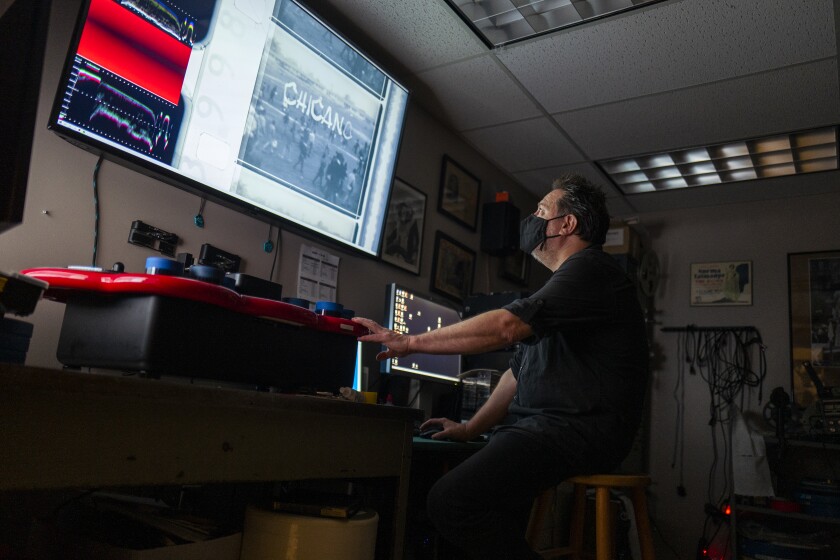
USC archivist Dino Everett pulls up an image from the reels salvaged from “Chicano I & II: The Mexican American Heritage Collection.”
(Francine Orr / Los Angeles Periods)
They challenged boundaries
The East L.A. walkouts of 1968, adopted by the assassinations of Robert F. Kennedy and Martin Luther King Jr., equally beloved by substantially of the Latino group, happened months apart. Then arrived the Chicano Moratorium of 1970 and the killing of Ruben Salazar, an esteemed reporter for the Los Angeles Occasions.
Out of this time period of social and political activism, and fed up with the stereotypical depictions of Latinos in media, Sal Castro, a essential chief in the historic walkouts, and Julian Nava, the first Mexican American voted to the Los Angeles Board of Education, approached Los Angeles’ KNBC-Television set with a pitch: to generate a present that explored challenges experiencing the Mexican American community and examined heritage and lifestyle from the Chicano viewpoint.
The station agreed to air the exhibit. Cruz, a former Lincoln Substantial University teacher and colleague of Castro’s, who was teaching historical past at Cal Condition Prolonged Seaside at the time, agreed to host the sequence immediately after Castro declined. Cruz’s “yes” would alter the study course of his professional life — immediately after the 1971 sequence reran in 1972, the information director of KABC-Tv set called Cruz presenting him a reporter work masking L.A.’s Latino neighborhood.
“Chicano I & II” episodes ended up put together by professors, historians and authorities — numerous of them founders of their universities’ Chicano experiments departments, like UCLA, Stanford, San Jose Condition and San Fernando Valley Condition School (now Cal State Northridge). Among the the matters they examined were being the history of migrant workers and Chicano labor activities, financial repression and education and learning inequality, as very well as the numerous cultural and other contributions of their Mexican ancestors to the Western planet,
“‘Stereotyping in the Mass Media,’ I suggest you could publish a headline with that these days!” Natalia Molina, a professor of American scientific tests and ethnicity at USC, suggests about a single of the episode’s titles.
The series, she suggests, was trying to exhibit that “Mexicans aren’t docile, that they are folks. They’re like you and I. They stay lives in 3 proportions. They have families. They produce. They have been just making an attempt to convey humanity to what we consider of when we feel of the Latinx inhabitants. And that is however one thing we’re having difficulties to do now.
“No one experienced completed anything like it,” she provides. “The sequence was reducing-edge then and I imagine, regretably, it’s cutting edge now.”
Numerous of the show’s guests and interviewees spearheaded the issues and matters lined and ended up amid the initial in their area, this sort of as Nava or Ricardo “Richard” Romo, an author and urban historian whom Molina, a 2020 MacArthur fellow, credits for laying the groundwork for her analysis.
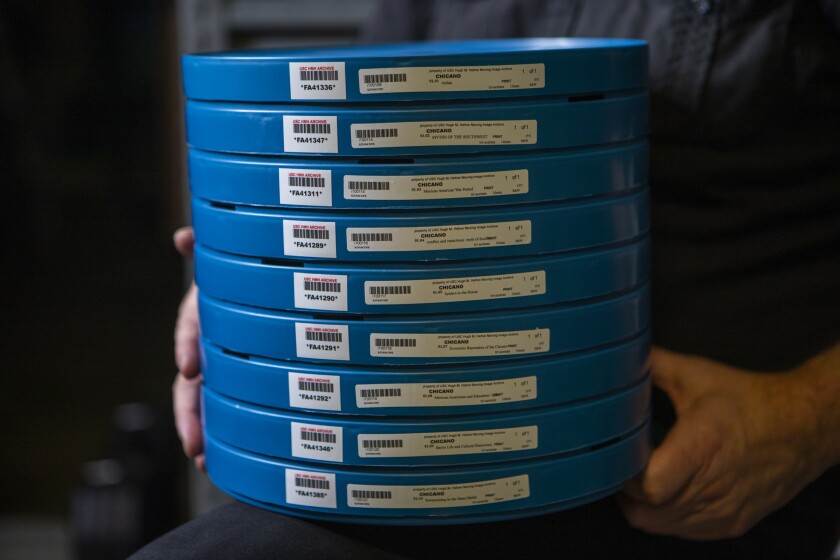
Archivist Dino Everett retains nine movie reels of “Chicano I & II: The Mexican American Heritage Series.”
(Francine Orr / Los Angeles Moments)
“These are the individuals that did that original work for us,” she suggests, “and challenged all kinds of boundaries.”
Romo, the urban historian, remembers relating to the educational problems elevated in the demonstrate.
“A great deal of us had experienced some of the things that discouraged these pupils,” claims the Texas-born-and-lifted scholar. “The libraries experienced no publications about our historical past. The lecturers have been driving in from the suburbs and didn’t understand a large amount of the points taking place in our communities. … [They] told us, ‘You cannot communicate Spanish in the classroom or in the schoolyard.’
“The worst aspect is that there have been a whole lot of good academics, but lots of of them didn’t believe more than enough of the pupils to persuade them to go to higher education,” Romo says. Only two from his graduating course of 400 went to a four-year higher education. He was one particular of them.
Groundbreaking as the collection was, viewership figures from that time aren’t uncomplicated to uncover. But primarily based on its 6 a.m. air time, the quantities were being most likely very low. It was “not a common hour,” recalls Romo. It was aggravating.
“It was like, ‘We want to do this, but we simply cannot give you a very good, primary hour in which we have the maximum advertisers,” claims Romo, stopping himself from currently being way too critical mainly because at the day’s close, the greenlight was offered to develop “one of the first shows of its form in the whole nation.” He just wishes that today’s engineering and social media existed then to extend the viewership.
Now it does.
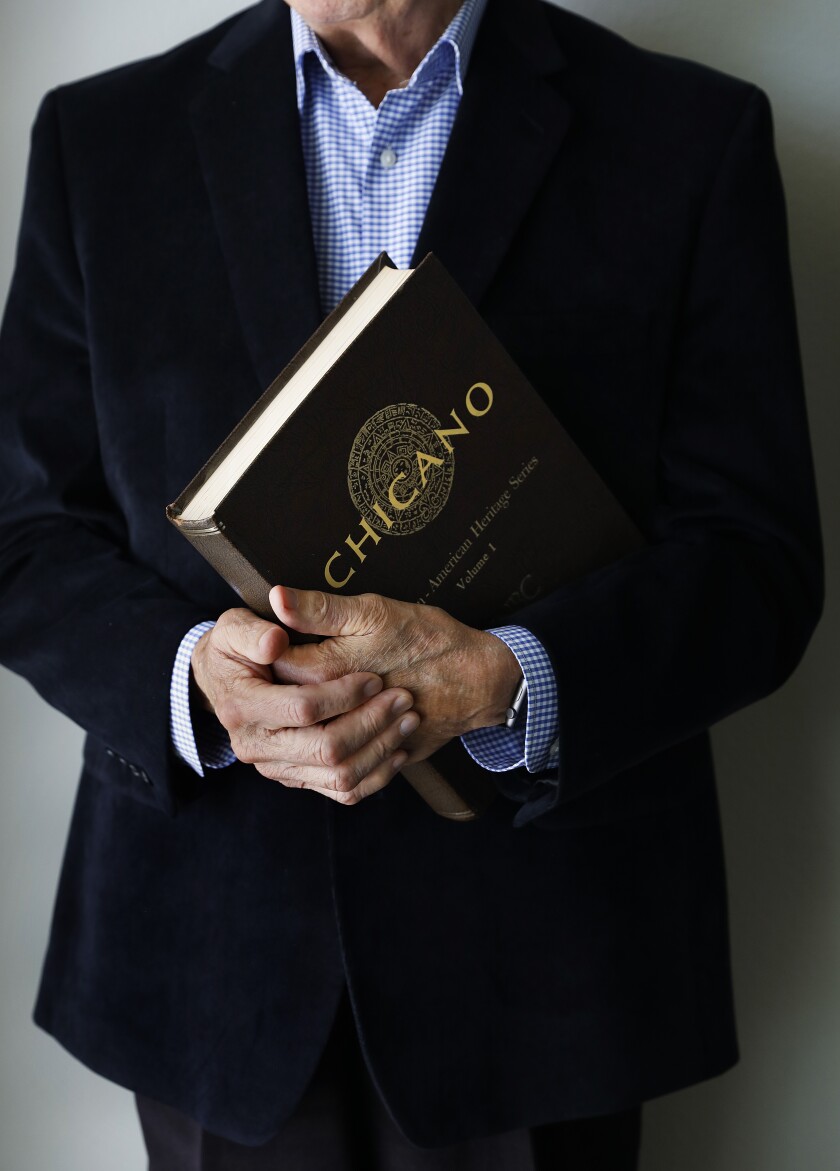
Scripts of the second volume of “Chicano I & II” are housed at USC.
(Christina Property / Los Angeles Periods)
The archivist powering the digitizing
Dino Everett is a self-described optimist.
A longtime archivist at the USC Hugh M. Hefner Transferring Image Archive, he’s figured out through the many years “that one particular way or a further, even if a little something arrives to me in horrendous affliction, I can ordinarily get a thing out of it.”
Luckily for us, Cruz experienced stored the movie reels in the finest way achievable, albeit inadvertently: in cardboard boxes, which act as an insulator, compared to uncovered metallic cans.
Household residences, Everett explains, aren’t ordinarily climate controlled, so movie saved in steel cans are inclined to temperature adjustments. “The variation, the back again and forth concerning the incredibly hot and chilly,” he suggests, “is what seriously damages the movie.”
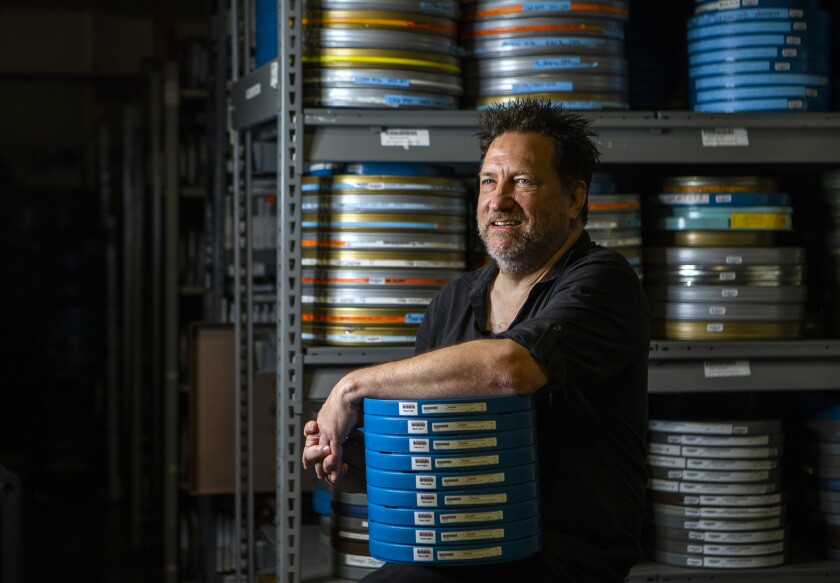
“One way or one more, even if something arrives to me in horrendous ailment, I can ordinarily get some thing out of it”: Archivist Dino Everett in a temperature-controlled storage facility at USC.
(Francine Orr / Los Angeles Occasions)
At the time in his fingers, Everett took the movies off their metal reels, ran them by way of a cleaning device, then place them via a movie scanner identified as a Kinetta prior to sliding them by means of a restoration computer software program to clean up up slight imperfections like dust and mild sparkles. Right after two weeks and much more than 60 hours, all nine episodes experienced been digitized.
“[Frank] was thrilled that I was able to scan them,” he claims. “I want I could say that it was since of my knowledge, but they ended up in definitely excellent form.”
The exhibit, notes Everett, was finished in kinescope — the approach of recording a are living Tv set broadcast onto movie by pointing a digicam at a screen or online video keep an eye on as it performed the footage it is how stations would preserve and copy their are living programming and ship it to affiliates.
The process was replaced with the arrival of videotapes in the 1950s, so it was scarce for Tv set stations in the early ’70s to still be employing it. But videotapes then have been dear. “It was essentially much less expensive to make black-and-white kinescopes than make complete-colored videotapes,” suggests Everett.
On a modern September afternoon by way of phone, Cruz struggled to reply the query: Why did not you digitize the movie sooner?
Following a transient silence, he responded: “Could’ve, would’ve, should’ve.”
“Chicano I & II: The Mexican American Heritage Series” can be viewed on the website of the USC College of Cinematic Arts’ Hugh M. Hefner Moving Graphic Archive at: uschefnerarchive.com/chicano.

